
Get your FREE 30-day trial.
Please complete all fields.
There are a total of five Amazon bookstores in the US. This past weekend I spent some time in number four, in Dedham, Mass., which opened in late February. I went not because I needed a new book but because, as so many retailers try to deliver a unified shopping experience, I was curious about how Amazon would leverage its online might to make a dent in the offline world.
Upon entering, Amazon Books looks like any other bookstore but newer, with a more modern, cleaner vibe. All around the store are purchase drivers, telling in-store shoppers what’s hot on Amazon.com and Goodreads (Goodreads, with 55 million members, was acquired by Amazon in 2013)
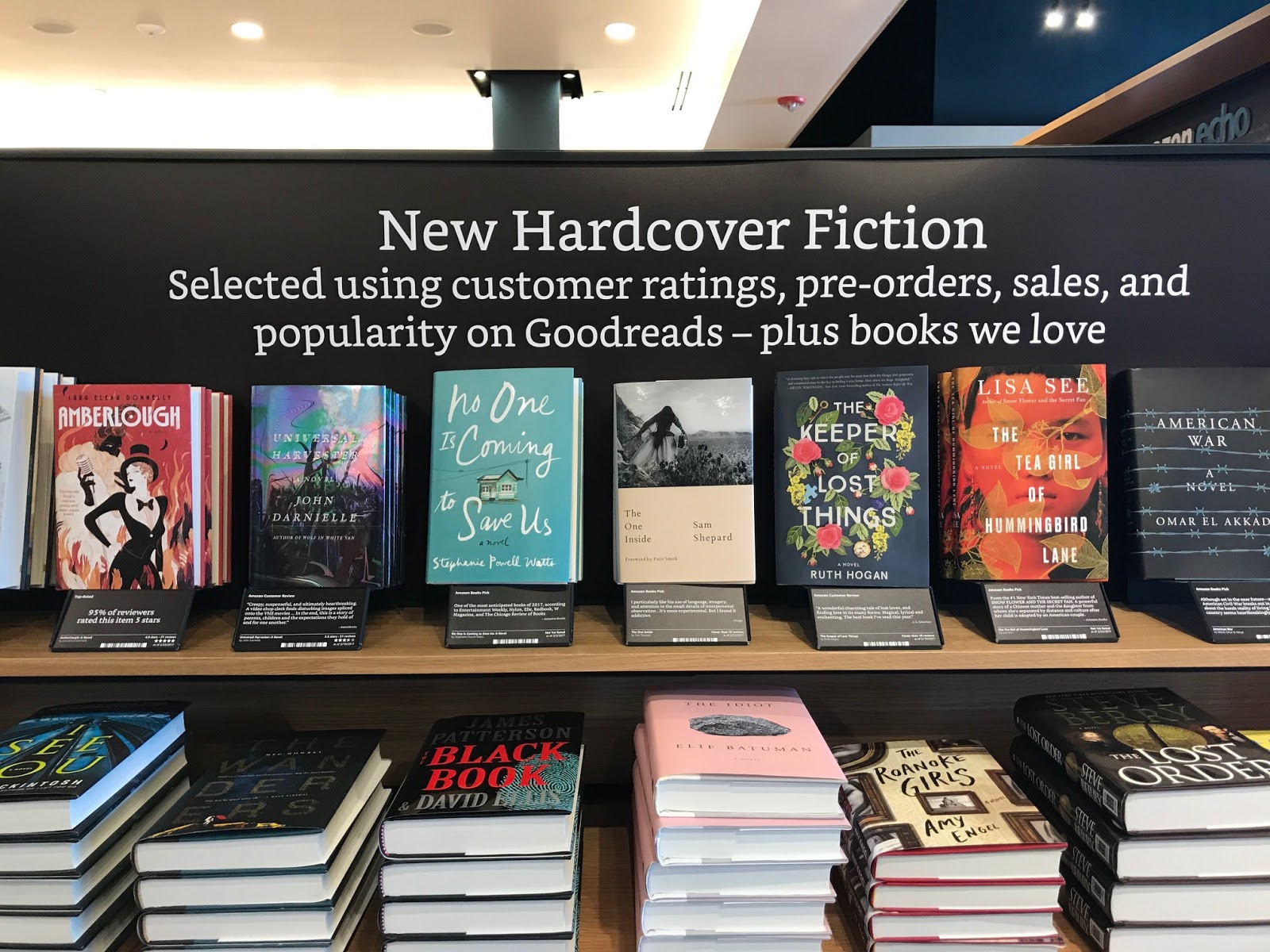
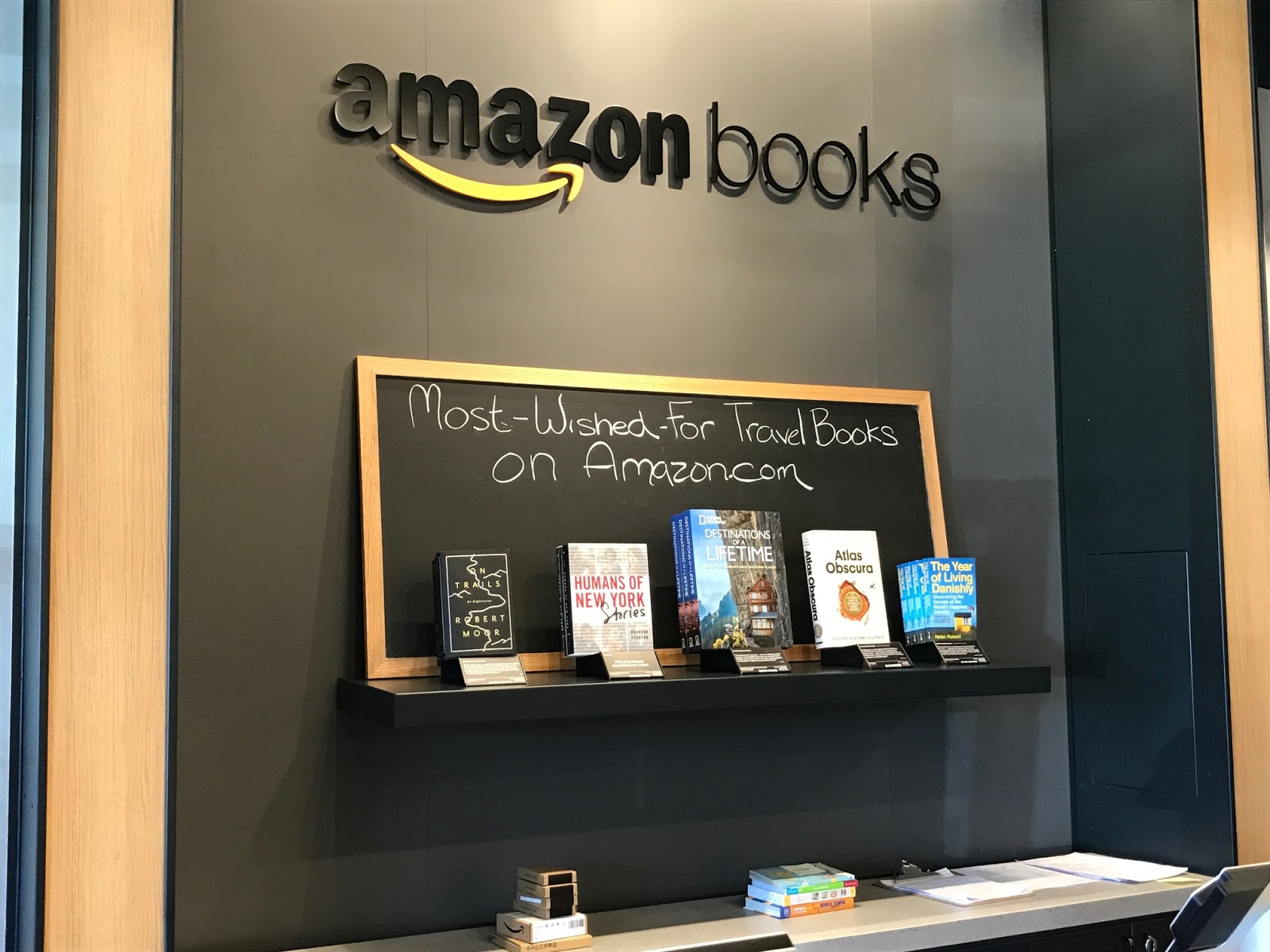
At the same time, the bookshelves are lined with placards prompting shoppers to purchase this book or that book based on previous purchases. See below.
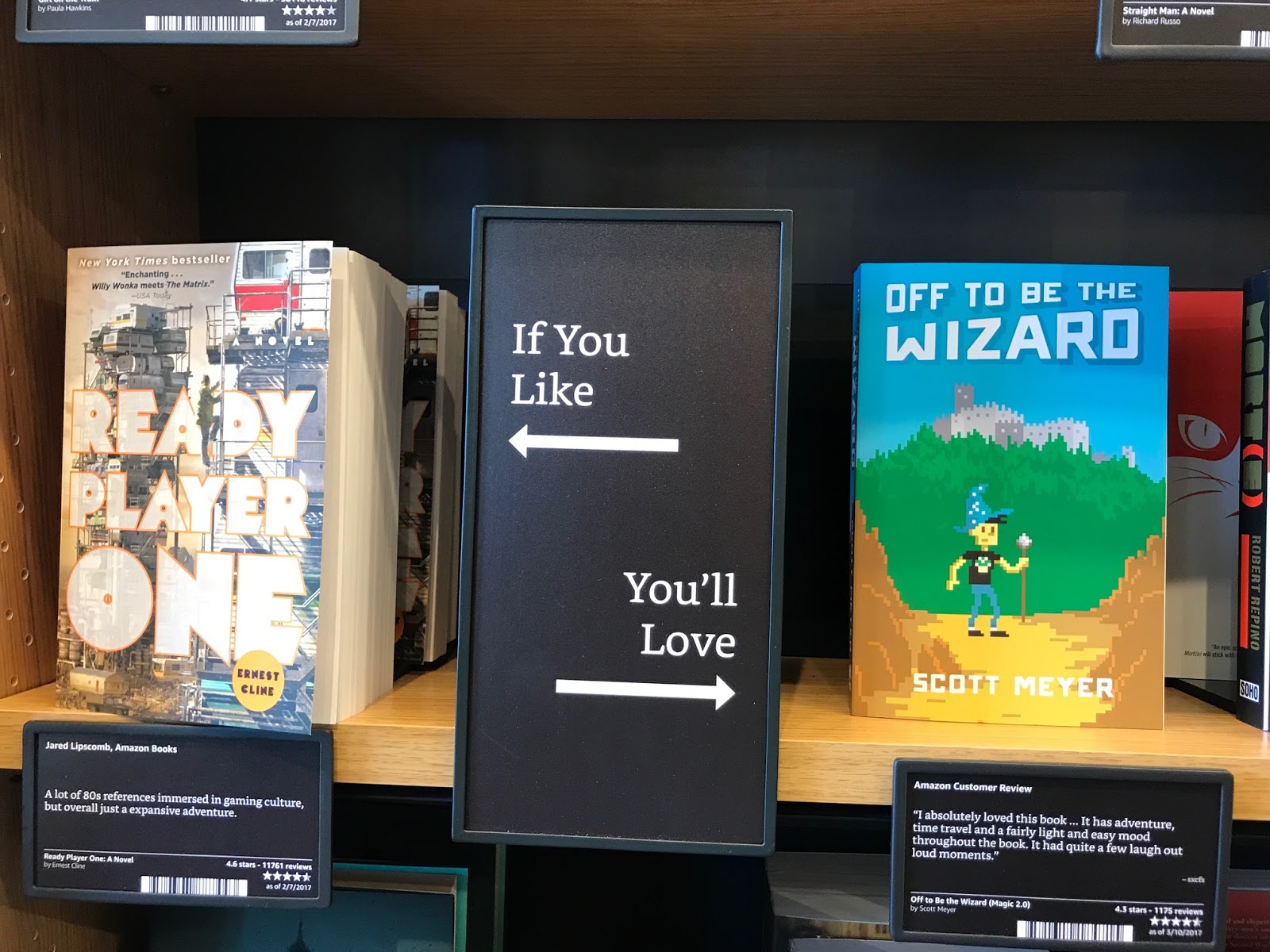
One way Amazon appears to be bringing its online and offline communities together is leveraging online customer reviews – see the smaller placards above – in the store. Surprisingly, there is an Amazon Customer Review card like this for nearly every book in the store. While this Amazon bookstore is much smaller than Barnes and Noble stores in nearby towns, with far fewer books, it’s impressive seeing individual reviews for so many titles.
Another note: While it’s common in other bookstores to see New York Times bestsellers displayed together, that’s not the case in the Amazon store. Here, books are displayed partly according to reviews, and other activity, on Amazon.com.
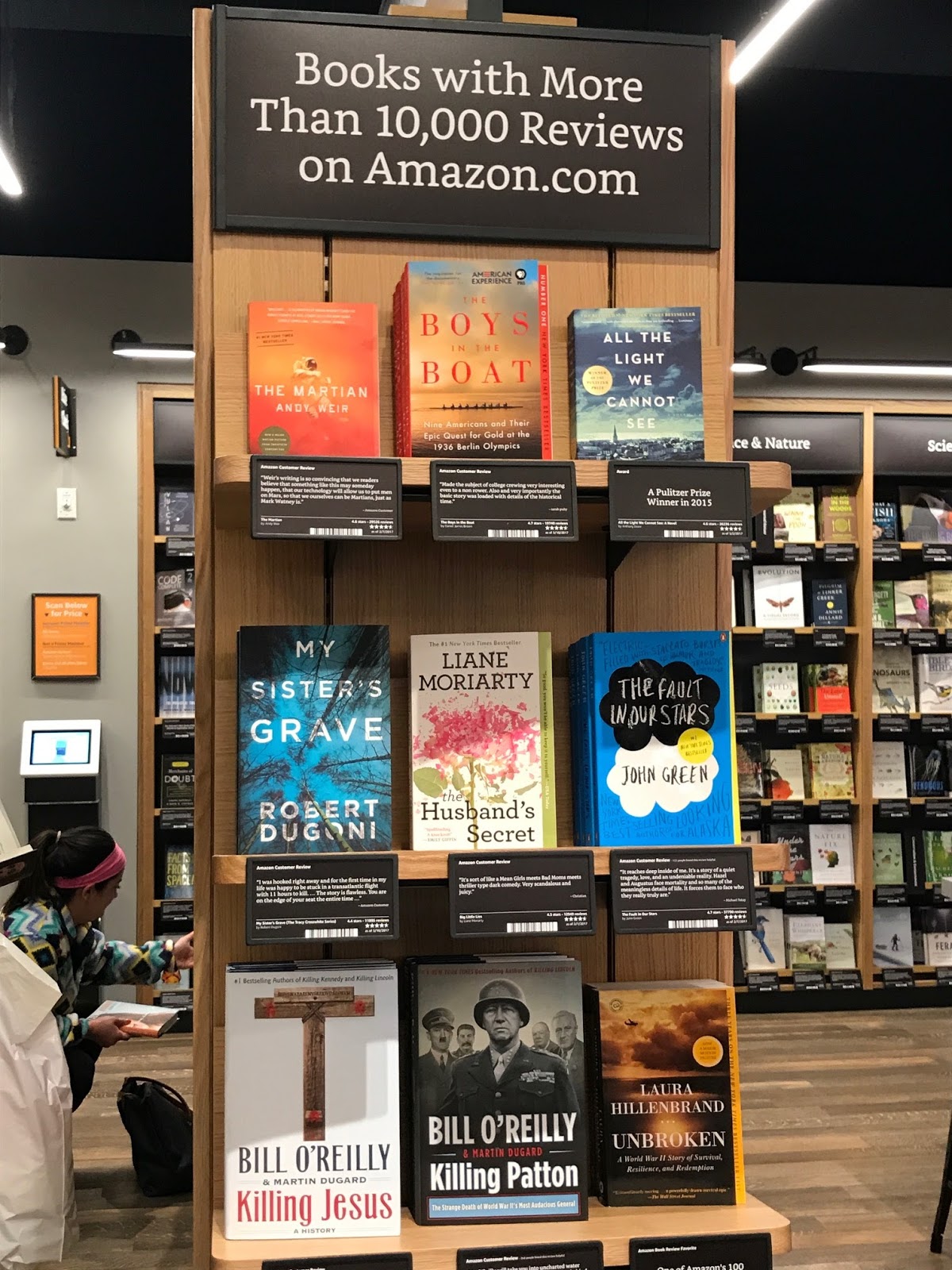
After I chose a book, Karen Joy Fowlers’ we are all completely beside ourselves, I scanned the barcode under one of many kiosks scattered throughout the store. As a Prime member, I would save $9.23 off the list price. This of course is a major way in which Amazon can drive more Prime memberships. At checkout (the store I visited did not have mobile POS) shoppers swipe the card that’s linked to their Prime account.
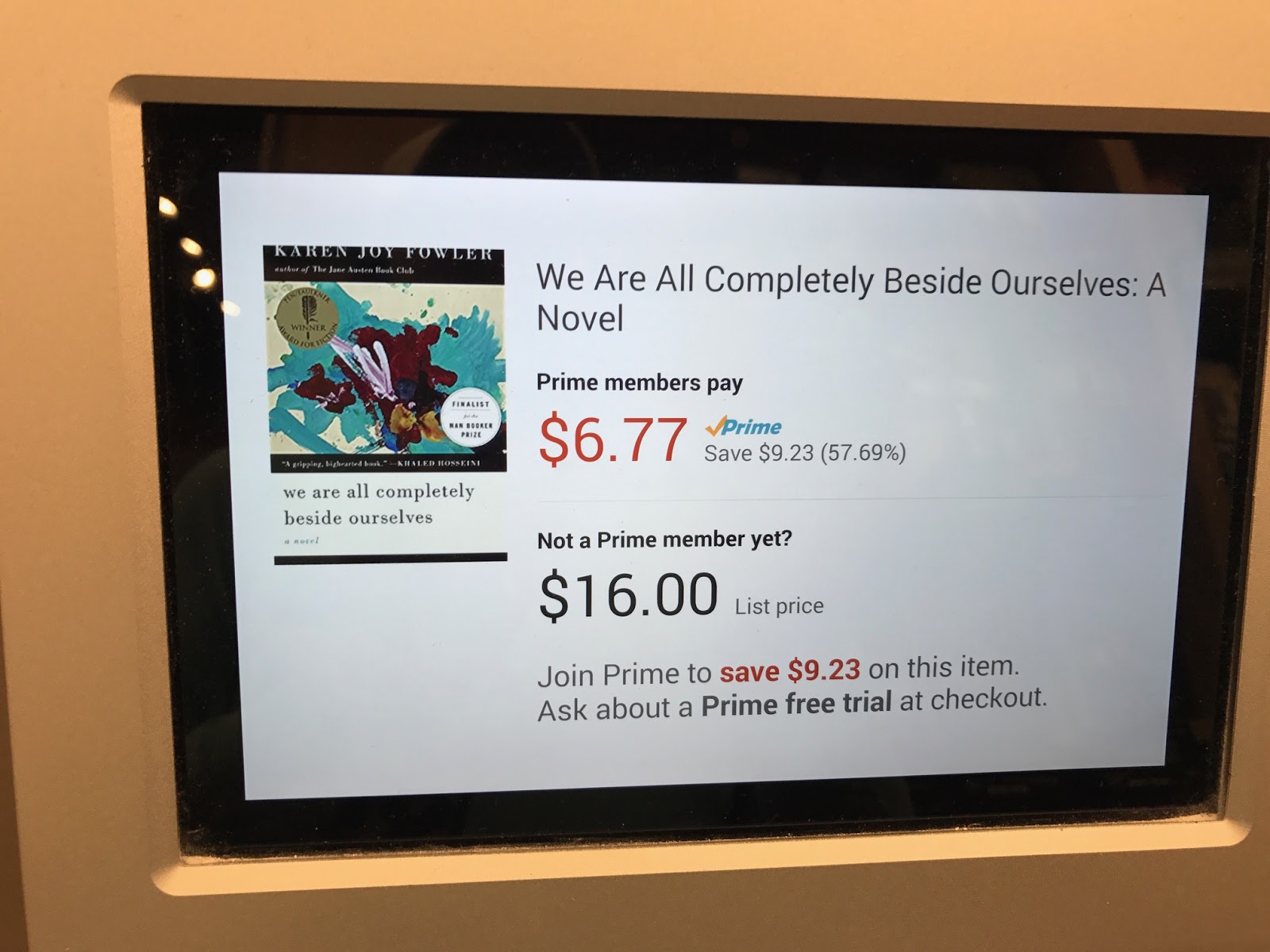
In addition to books, Amazon stocks Echos, Kindles and Amazon Fire TV products, each with a dedicated space and staffed with experts to answer questions. A children’s area features Kindle Fire Kids Edition devices.
Post-sale
Even the shopping bag includes reminders of what’s hot at Amazon.com, never letting shoppers forget about about digital. One side panel listed the ten most gifted cookbooks on Amazon.com, the other listed the most frequently looked-up words in popular Kindle books.
My e-receipt included an option to take a short survey rating my experience. (Interestingly, I was first prompted to choose the city in which I shopped. Seems that some simple geotargeting would have saved that step.)
The other thing my e-receipt included was a link to “view or manage order on Amazon,” which revealed my offline purchase in my online Prime account. This is important, as it’s a tangible example of a retailer establishing a single, unified view of customer activity.
On the flipside: I am a frequent shopper of a major department store chain, and exclusively use their credit card to make purchases both online and off. Yet my order history on its site reveals only purchases made online, not in-store. That retailer is only getting half the picture of me as a customer, and is likely missing opportunities to personalize my experience.
With plans to open more bookstores, as well as furniture, grocery and other stores, Amazon’s brick and mortar ambitions are no novelty. However, at the Dedham, Mass. location, passersby treated it as such, taking pictures of the signage as if they were tourists at the Lincoln Memorial.